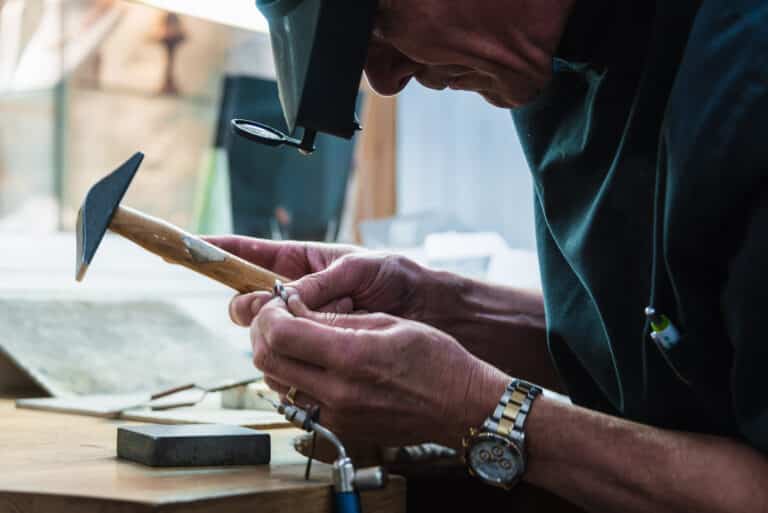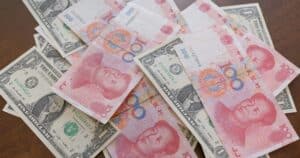As one of the most valuable metals, platinum assets are given more scrutiny than other less expensive precious metals. Its rarity, combined with its resistance to wear and tarnishing, makes it a highly sought-after material for jewelry, industrial applications, and investments. But how can you be sure that the shiny platinum you’re holding is genuine?
Understanding the science behind these tests highlights not only the complexity of working with precious metals but also the importance of authenticity in maintaining the integrity of the platinum market. Keep reading to learn more about the science behind testing this valuable metal.
Why Platinum Is So Appealing To Investors
Platinum, characterized by its lustrous, silvery-white appearance, is one of the rarest and most valuable metals in the world. It’s part of the platinum group metals (PGMs) and is known for its high melting point, remarkable resistance to corrosion, and exceptional catalytic qualities.
Platinum’s Applications
Platinum is an important material in automotive engineering, where it’s used in catalytic converters in cars, trucks, and buses to reduce harmful emissions. Additionally, it’s used in electrical contacts, especially ignition tips, due to its high thermal stability and excellent conductivity, which is reliable even under extreme conditions.
In healthcare and medicine, platinum is indispensable in manufacturing pacemakers and surgical wires due to its biocompatibility. Jewelry designers prefer this precious metal for its bright white appearance and resistance to tarnishing to create elegant pieces.
Platinum is also a popular choice among investors. Its rarity often results in high prices, making it an attractive option for individuals and institutions looking to diversify their investment portfolios. Platinum is traded in various forms, including bullion coins, bars, and exchange-traded funds (ETFs).
Characteristics Of Genuine Platinum
Distinguishing genuine platinum from imitations can be difficult. Here are some signs to look for when verifying the authenticity of platinum:
- Hallmarks: Genuine platinum usually has a hallmark indicating its purity. Common platinum hallmarks are ‘Plat’ or ‘Pt’ followed by a number indicating the percentage of pure platinum in thousandths.
- Weight: Platinum is denser than many other metals, so a platinum item will usually feel heavier than a similar item made of another metal.
- Color and Luster: Platinum has a unique white luster that is more subtle than silver or white gold. Unlike white gold, which can be yellow, platinum retains its color over time.
- Resistance to tarnish and wear: Platinum is highly resistant to tarnish and wear. If an item shows little wear or tarnish, it could be platinum.
- Non-reactivity: Platinum is a precious metal and does not react with common acids. A lack of reaction in an acid test could indicate that the item is platinum.
The Need For Testing Platinum
As with any high-value commodity, platinum isn’t immune to counterfeiting. It’s not just about protecting individual buyers; it’s about maintaining the integrity and credibility of the entire platinum market.
The Rise of Counterfeit Precious Metals
In recent years, the precious metals market has seen an alarming increase in counterfeit products. Unscrupulous dealers and individuals have flooded the market with counterfeit platinum coins, bars, and jewelry, taking advantage of unsuspecting buyers.
While these counterfeit products look like real platinum, they’re often made of cheaper metals and coated with a thin layer of platinum. This trend not only harms individual investors but also undermines confidence in the precious metals market.
Relying on visual inspection alone is no longer sufficient due to the sophistication of modern counterfeiting techniques. Precise scientific testing is required to confirm that a piece of platinum is genuine. Testing can reveal the elemental composition of the metal, allowing experts to tell with certainty whether it’s real platinum or a cleverly disguised counterfeit.
Implications For The Market
Confidence in the market depends heavily on the assurance that the products being traded are genuine. Regular and rigorous testing can help maintain this confidence and promote a healthier and more reliable market for all stakeholders.
Certification, which often follows testing, offers an additional layer of assurance. A certificate of authenticity or a hallmark verifies that the platinum product has been tested and meets the stated purity standards. This provides tangible proof of authenticity and purity, further bolstering confidence among market participants.
Platinum Testing Methods
Given the high value and widespread use of platinum, accurate and reliable testing methods are important to determine its authenticity and purity. By knowing these methods, you can better ensure that the platinum you’re trading is genuine.
X-ray Fluorescence Testing
X-ray fluorescence (XRF) is a widely used method for testing platinum. This non-destructive technique uses X-rays to analyze the elemental composition of the metal. When platinum is exposed to these X-rays, it emits a unique energy or fluorescence. The XRF instrument measures this emitted energy to confirm the composition of the metal and determine if the metal in question is true platinum.
The science behind XRF testing is based on the principle that each element has a unique atomic structure. This structure results in a characteristic energy signature when irradiated with X-rays. By measuring this emitted energy, the XRF instrument can accurately identify the elements in the metal.
In terms of accuracy and reliability, XRF analysis is highly regarded. It can detect even small amounts of various elements, making it an excellent tool for determining the composition of precious metals. However, it’s important to note that the accuracy of XRF testing can be compromised if the metal is coated or plated with another material.
Acid Testing
The acid test is another common method of verifying the authenticity of platinum. In this test, a small drop of acid is placed on the metal. Genuine platinum will not react to the acid, while other metals will discolor or deteriorate, indicating that they are not platinum.
The science behind the acid test is based on chemical reactivity. Platinum is a precious metal, which means it’s resistant to corrosion and oxidation in moist air. This resistance to chemical reactions is why platinum does not react to acid.
Acid tests, while simple and inexpensive, offer less precision than methods such as XRF testing. An acid test can confirm the presence of platinum, but it cannot determine the exact purity of the metal. In addition, acid tests can damage the object being examined, making it less suitable for valuable pieces.
The Role Of Testing In Platinum Valuation
Testing isn’t just a procedural step but a cornerstone of the platinum market, influencing buying, selling, and insurance practices. They promote transparency, fairness, and trust in the market, thus fostering a healthy trading environment for all stakeholders.
How Testing Contributes To Accurate Valuation
Testing provides invaluable information about the authenticity and purity of platinum, which largely determine the value of platinum. Authenticity confirms that the item is indeed platinum, while purity – the percentage of pure platinum in an alloy – directly affects the price per gram. Without testing, it’s nearly impossible to assess these characteristics accurately.
Implications For Buying, Selling, And Insuring Platinum
For buyers, testing ensures they get what they pay for and protects them from overpaying for counterfeit or low-quality platinum. For sellers, testing can provide a certificate of authenticity that can increase the value and marketability of their platinum items. It creates a level of trust and transparency that can attract more potential buyers and justify a higher selling price.
Insurance companies often base their coverage on the estimated value of an item. The appraisal provides assurance of an accurate valuation and ensures that platinum items are adequately insured.
Start Diversifying Your Portfolio With Platinum
In a world of uncertain markets and unpredictable returns, investing in precious metals offers a hedge against some of the most common investment pitfalls. Unlike stocks and bonds, precious metals will always retain intrinsic value. Their prices often move independently of stock markets and can increase during market downturns, providing a valuable buffer against economic volatility.
If you’re looking to invest in quality, authentic platinum, look no further than Noble Gold Investments. We guarantee high-quality platinum bars and coins that can be stored at home or invested directly into a tax-advantaged Precious Metals IRA.
Ready to get started? Give us a call today at (877) 646-5347, or click here to open an account.







